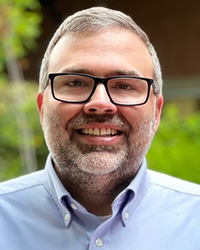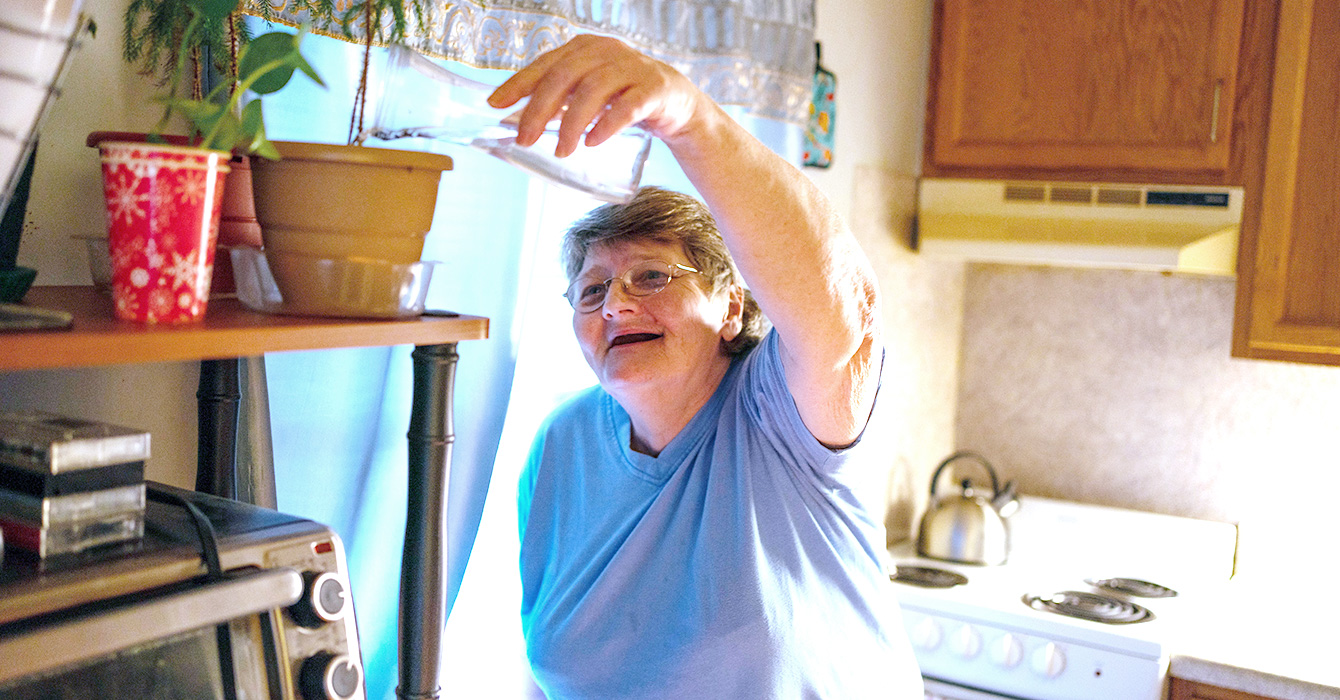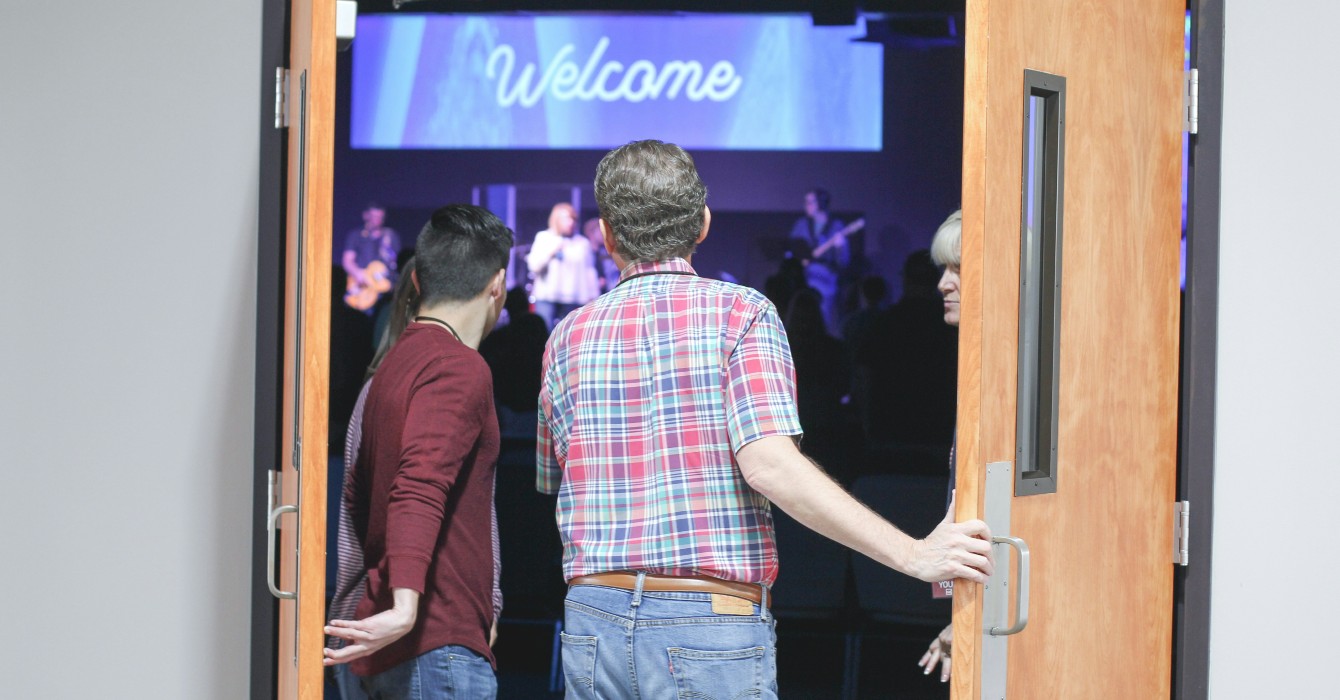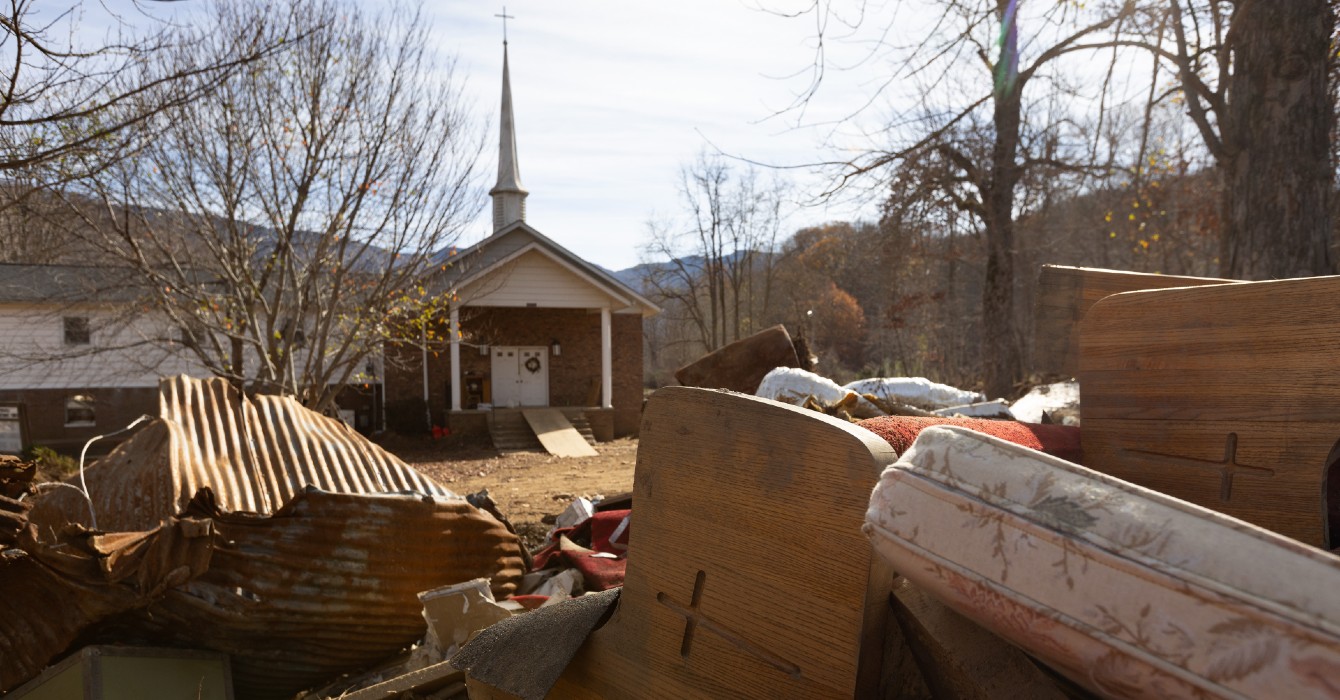For people living without shelter, the path to housing and wholeness can be long and difficult.
For 30 years, Housing for New Hope has been walking alongside those folks in Durham, North Carolina. Originally launched as a transitional shelter for men, Housing for New Hope has evolved into an organization committed to helping people where they are — and staying with them through their journey.
“The thing we can most model for others would be how to walk alongside people who are experiencing extreme challenges over a very long period,” said Russell Pierce, the nonprofit’s executive director.
Housing for New Hope has five programs to combat homelessness in the rapidly gentrifying city of 325,000, where an estimated 12% of the population lives in poverty. Their efforts include street outreach, housing location and navigation, rapid rehousing, supportive housing, and affordable housing.
The nonprofit is not faith-based, but its roots lie in church efforts, and many of the staff, like Pierce, are motivated by their Christian faith.
“It’s a driver and an anchor for them in understanding a different vision of the world…, a more just world when it comes to housing,” Pierce said.

Pierce worked as an executive with Church World Service and the United Methodist Church’s Global Ministries/UMCOR agency before joining Housing for New Hope in 2019. He earned an M.Div. at Duke Divinity School.
He spoke with Faith & Leadership intern Esther Valle about Housing for New Hope. The following is an edited transcript.
Faith & Leadership: Over its three decades in existence, what do you think has set Housing for New Hope apart from similar organizations?
Russell Pierce: First, we have been innovative since day one. By that I mean we will listen and discern community needs. We’ll look at what client needs are and what we’re hearing back from them about where they’d like to go in the future.
We will either develop a solution to that or look other places for solutions to that and then go forward with it.
We’re not afraid to set things down. We started with the men’s transitional shelter back in ’92 and added a women’s shelter a couple of years later. We don’t have either of those anymore. The reason is, primarily, that in ’07, we were one of the first agencies in the state to work with rapid rehousing.
The idea being, instead of folks going into a shelter for a while and then getting ready for housing, or even into a transitional shelter and getting ready for housing, it’s better to just get people into housing and then surround them with supportive services they need.
We were willing to try something new and innovative. When we did it, we were like, “Oh, this is a better solution.”
Second, we have a deep sense of compassion for our clients and walk alongside them where they are. There’s an approach to homeless services called housing first, which is getting folks into housing and surrounding them with services.
The other big part of it is not creating a lot of barriers to getting housing. Some other programs, some of them faith-based, will have lots of barriers — like, “You need to get clean” or, “You need to be ...”
I hate that phrase, but that’s the phrase they’ll tend to use: “You need to be ready to stop drinking immediately to come into this group. And if you stumble, you’re out.”
A big piece for us, and I think this is why some of the more progressive churches have attached to us, is that we really work with people where they are; we’ll walk alongside them as they stumble. That means we work with people for years.
We have a client living in one of our communities right now who was unsheltered for five years because she wasn’t ready to come indoors. We just kept working with her and working with her. She would go off grid for six to eight months and then come back on the grid and engage.
There’s that wonderful passage in Matthew 25, “I was hungry and you fed me; … I was naked and you clothed me.” It’s a great list, and it’s a great animating list, but in many ways, you can treat it like a checklist. It’s like, “Jesus gave me this five-point list. I just check it off, and I’m good to go.”
It’s more complex than that, but I do think we often treat it that way. I am just amazed by the congregations that have worked with us this whole time, and in very deep ways.
F&L: Is Housing for New Hope connected to the church?
RP: We have a very deep and historic connection to a number of the PCUSA churches here in town. Housing for New Hope was actually an outgrowth of what was once the Durham Presbyterian Council.
We have a lot of financial support and a number of volunteers. There are often board members from the churches, and clergy among them. I think right now we have three clergy serving on the board of 15.
We are interestingly, however, not a faith-based organization. We have not been since our founding. Some staff, not necessarily all, have faith in one form or another, but we have never officially been faith-based.
F&L: In what way does faith influence your work?
RP: This is extremely difficult work. The folks that we walk alongside have a lot of barriers to housing. Another way to say this is they just have many life challenges. You are often dealing with people that are very vulnerable. You are working with folks in very different phases of their journey toward stable housing and wholeness.
From a faith perspective, we say, “A person is of sacred worth” or “a child of God.” We also make the statement that we believe affordable housing contributes to a just society.
Because we’re aiming for a just society, that includes issues around diversity, equity, inclusion and other pieces around economic justice, a whole host of pieces.
F&L: How would you advise a church that wants to engage in this work?
RP: The first thing is to talk to people in your area who are already doing this. Find out what they’re experiencing, what kind of support they need, and plug in with them.
F&L: Do you think that there’s an opportunity for expansion for Housing for New Hope?
RP: In recent years, we’ve actually doubled in size. We’ve gone from 14 to 30 staff in the last three years or so, and the budget’s grown about 50%.
I think part of what we’ve done is to hyperfocus on Durham. Because of the intensity and the type of gentrification we’re having, we are ending up with more and more people who are unsheltered and experiencing homelessness.
Three years ago, there were no families here sleeping in cars. It just didn’t really happen; there was someplace they could end up. It is not the case now. So we’ve grown this street outreach program, and we work closely with our partners in the Durham Collaborative to End Family Homelessness.
I think for us, in many ways, it’s digging in more deeply where we are and expanding a little more broadly. Right now, with supportive housing, depending on the day and who’s doing the estimating, we almost immediately need 125 to 200 more placements of the specialized supportive housing that we do. We need that almost immediately.
We absolutely get invitations to go other places, but thus far for us, a lot of the focus has been on how we dig in more deeply here, because the community’s changing so quickly.
F&L: You’ve worked for global ministries at Church World Service and UMCOR. How does this experience inform your work on the local level?
RP: One, I think both of those experiences helped clarify for me that I wanted to be able to dig into one place.
It’s nice to be in an organization that’s wired the same way. It’s a good alignment, because I think there’s such a complexity to what we’re dealing with here, even just on the gentrification front.
In terms of the gentrification, often you see it happening street by street and neighborhood by neighborhood. But here it’s happening house by house. There’s no part of Durham that isn’t desirable.
I’ve been told there’s only one other area dealing with it in quite the way we are, which is southeast Washington, D.C.
I always found it interesting the way the Spirit would work in multiple places, in similar ways at the same time, completely disconnected. It really taught me that I want to be able to be engaged in one place, so I intentionally made this choice.
Because we’re aiming for a just society, that includes issues around diversity, equity, inclusion and other pieces around economic justice.


















